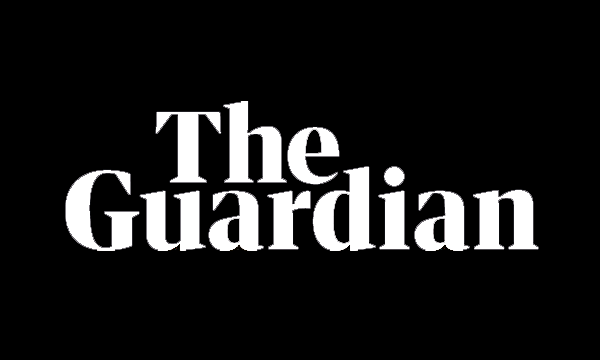
It was a big day in the markets on Tuesday. U.S. stocks were down for the first time in eight trading sessions, while the price of gold set a record, closing over $4,000.
In terms of new 52-week highs and lows, the NYSE had 127 new highs and 52 new lows, while on Nasdaq, the new highs outdid the new lows, 275 to 86.
One of the stocks hitting a new low on Nasdaq that caught my attention was actually an ETF. The Lazard US Systematic Small Cap Equity ETF (SYZ) hit a new 52-week low of $24.59.
I’ve been focusing more of my attention on small-cap stocks in recent months because large caps, at least those listed in the U.S., have become quite expensive in 2025.
In July, I wrote about the differences between the two most popular small-cap ETFs — the iShares Russell 2000 ETF (IWM) and the iShares Core S&P Small-Cap ETF (IJR) — and explored possible options to capitalize on their growing popularity among investors.
Warren Buffett said at Berkshire Hathaway’s (BRK.B) 1999 annual shareholder meeting that if he were starting over with $10,000 to invest, he’d look for smaller companies.
“I probably would be focusing on smaller companies because I would be working with smaller sums and there’s more chance that something is overlooked in that arena,” Money.ca contributor Vishesh Raisinghani wrote in August.
While the two iShares ETFs are passive index ETFs, Lazard’s actively managed ETF seeks to identify the most compelling opportunities within the investable small-cap universe of 2,500 stocks.
Not only is SYZ worth considering if you’re interested in owning small-cap stocks, but these three stocks in its top 10 holdings are also. Here’s why.
The ETF Itself
I must confess, the 52-week low that SYZ hit yesterday isn’t real at least, not in the truest sense. The ETF was converted from a mutual fund to an ETF on Sept. 12 after the close of trading. It’s had 17 days of trading as an ETF.
Since the mutual fund’s inception on Oct. 29, 2021, it has an annualized total return of 3.56%, considerably higher than -0.04% for the benchmark Russell 2000 Index.
The ETF’s portfolio invests in anywhere from 200 to 500 small-cap stocks (427 currently) out of the 2,500-stock universe mentioned earlier. The portfolio managers have created a proprietary automated process for selecting the ETF’s holdings based on several fundamental factors.
The stocks held have market caps that range from $54.5 million to $15.9 billion.
The valuation metric I’m focusing on is the average price-to-cash flow ratio and the free cash flow yield. The former is 9.93x, considerably lower than 15.07x for the Russell 2000, while the latter is 6.57%, markedly higher (suggesting value) than the index’s 1.98% yield.
The biggest negative is the ETF’s net expense ratio of 0.60%. However, if you’re used to paying for active management, that’s not exorbitant for small-cap stocks.
Mueller Industries (MLI)
Technically, the definition of small-cap stocks is those with market caps between $250 million and $2 billion. However, most small-cap funds stretch the high-end of the range to over $10 billion. That’s where Mueller Industries (MLI) finds itself.
I’m pretty familiar with the maker of copper, brass, aluminum, and plastic products. In December 2023, it was one of three mid-cap stocks I recommended that had hit new 52-week highs.
At the time, its market cap was around $5.5 billion. Today, it’s $10.9 billion, nearly doubling in 22 months. Not a bad run.
It can keep going. Despite all the gains, it still only has two analysts covering its stock. Both rate it a Buy, with a median target price of $114.50.
Trading at just 14.6 times its 2025 earnings per share estimate of $6.75, it remains a GARP (growth at a reasonable price) stock despite subdued residential construction in the U.S.
It is the ETF’s second-largest holding at 0.88%.
Perimeter Solutions (PRM)
Perimeter Solutions (PRM) is the ETF’s seventh-largest holding. The company makes products for the Fire Safety (74% of revenue) and Specialty Products (26%) industries. It has a $3.3 billion market cap.
The Missouri-based company’s shares are up 73% in 2025. Growth is a big reason for the gains.
In the first six months of 2025, its sales increased by 26% to $234.7 million, with gains of 20% or more from both segments, while its adjusted earnings per share rose 78% to $0.41 from $0.23 in the same period a year earlier.
Here in Nova Scotia, where I live, we’ve spent the summer and fall dealing with some wildfires, including one very close to the provincial capital of Halifax. That brought in water bombers to drop water on the fires.
Perimeter’s fire safety products include PHOS-CHEK and FIRE-TROL fire retardants, which help reduce the likelihood of a wildfire igniting in the first place. That’s a product much needed in virtually every part of the world due to climate change and a warming planet.
One key aspect to evaluate is the company’s unique organizational structure.
On Nov. 7, 2021, Perimeter completed a reverse merger with London Stock Exchange-listed EverArc Holdings, which subsequently acquired Perimeter from SK Capital for $2 billion in cash and preferred shares.
As part of the transaction, EverArc’s founders received a compensation plan for ongoing advisory fees that would pay out over the next decade. It included the annual issuance of 1.5% of the total shares outstanding as a fixed advisory fee through Dec. 31, 2027, and a performance fee, paid in cash or shares, equal to 18% of the share price gain over a predetermined high-water mark, through Dec. 31, 2031.
In 2024, for example, the founders received 2.36 million shares for the fixed advisory fee, but no variable compensation on the performance fee because the average price of its shares in 2024 was $12.85, below the previous high-water mark of $13.63.
Based on gains in 2025, the founders will likely get both fixed and variable advisory fees. After 2027, only the performance fee would apply.
The critical thing to remember is that the EverArc Founder’s Group, which includes Perimeter CEO Haitham Khouri, held 7.1% of the company’s stock as of March 31. By 2027, it is likely to be no more than 10%.
Is it significant? You bet. Is it a deal breaker? I don’t think so.
Willdan Group (WLDN)
Willdan Group (WLDN) is the smallest of the three companies with a $1.4 billion market cap. The company provides professional, technical and consulting services to utilities, government agencies, and private businesses.
It has two operating segments: Energy (74% of net revenue) and Engineering and Consulting (26%).
In the first six months ended June 30, its net revenues increased by 27.5% to $180.3 million, while its adjusted EBITDA was $36.4 million, representing a 52.3% increase from the same period in the prior year.
As a result of its strong first half, the consulting firm has raised its full-year 2025 guidance.
It now expects net revenue of $345 million at the midpoint of its guidance, with adjusted EBITDA of $71.5 million, and adjusted earnings per share of $3.58. That’s double-digit growth across all three financial metrics.
While its shares are up 148% year-to-date, they still trade at a reasonable 26 times its 2025 EPS estimate. The current multiple is either in line with or lower than the company’s historical average P/E.
Although the company’s guidance for 2025 net revenue implies just 16% growth year-over-year, that’s up from 9.9% growth in 2024.
My guess is that management is being cautious with its estimate for the second half of the year. I would not be surprised if it maintained revenue growth of 20% or more in each of the final two quarters.







